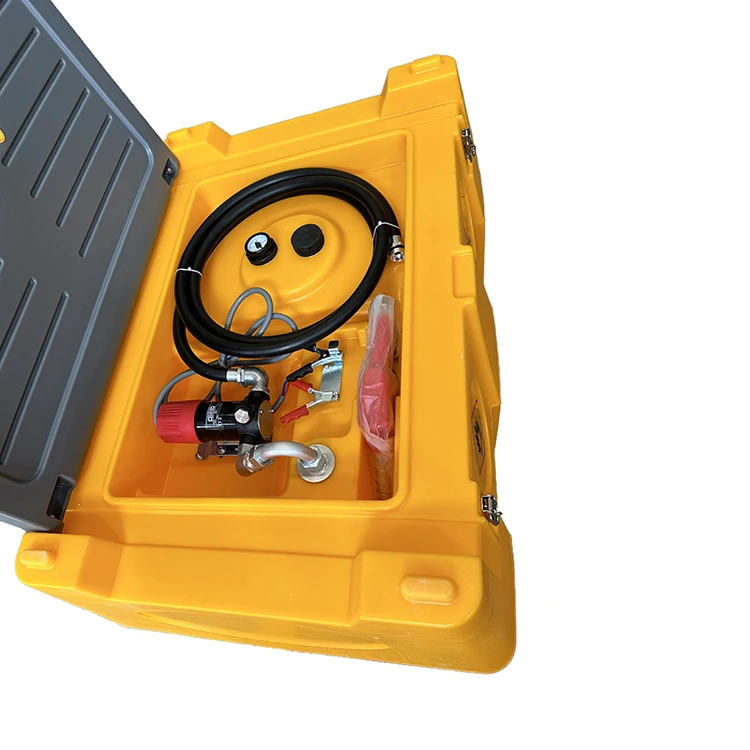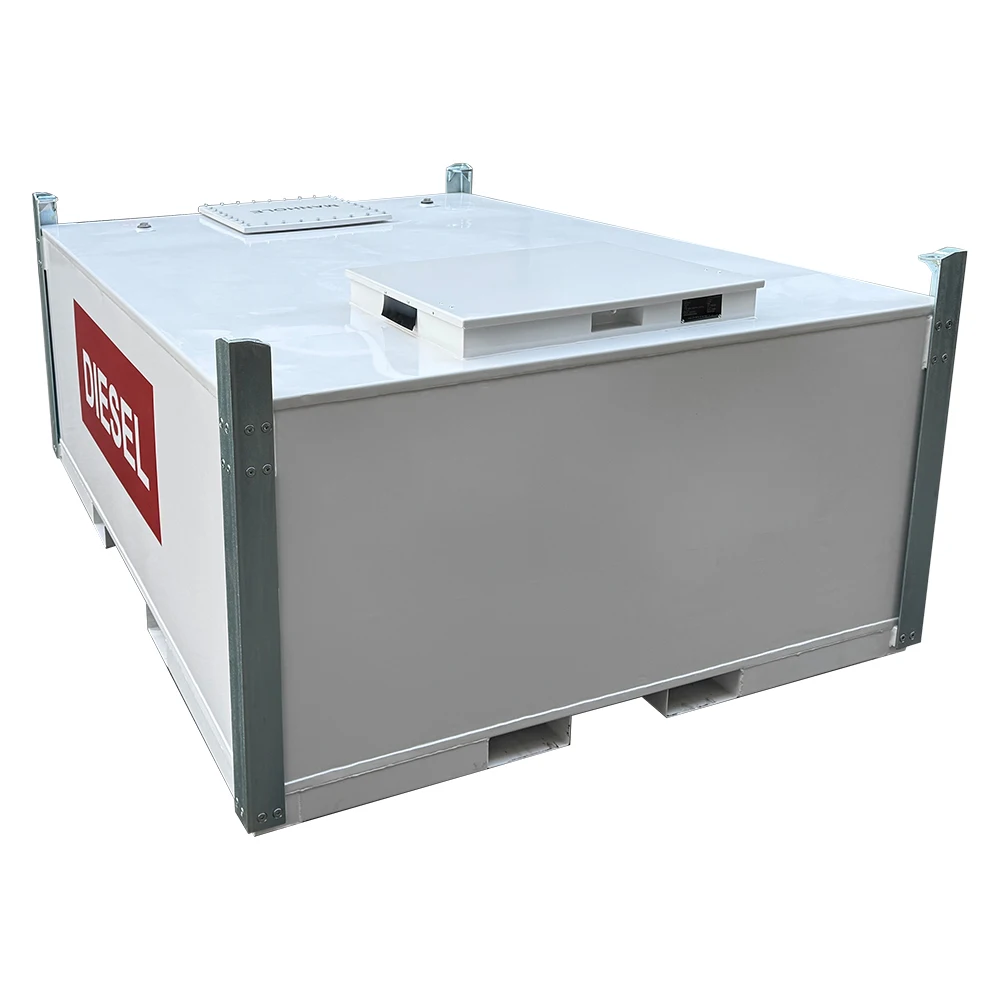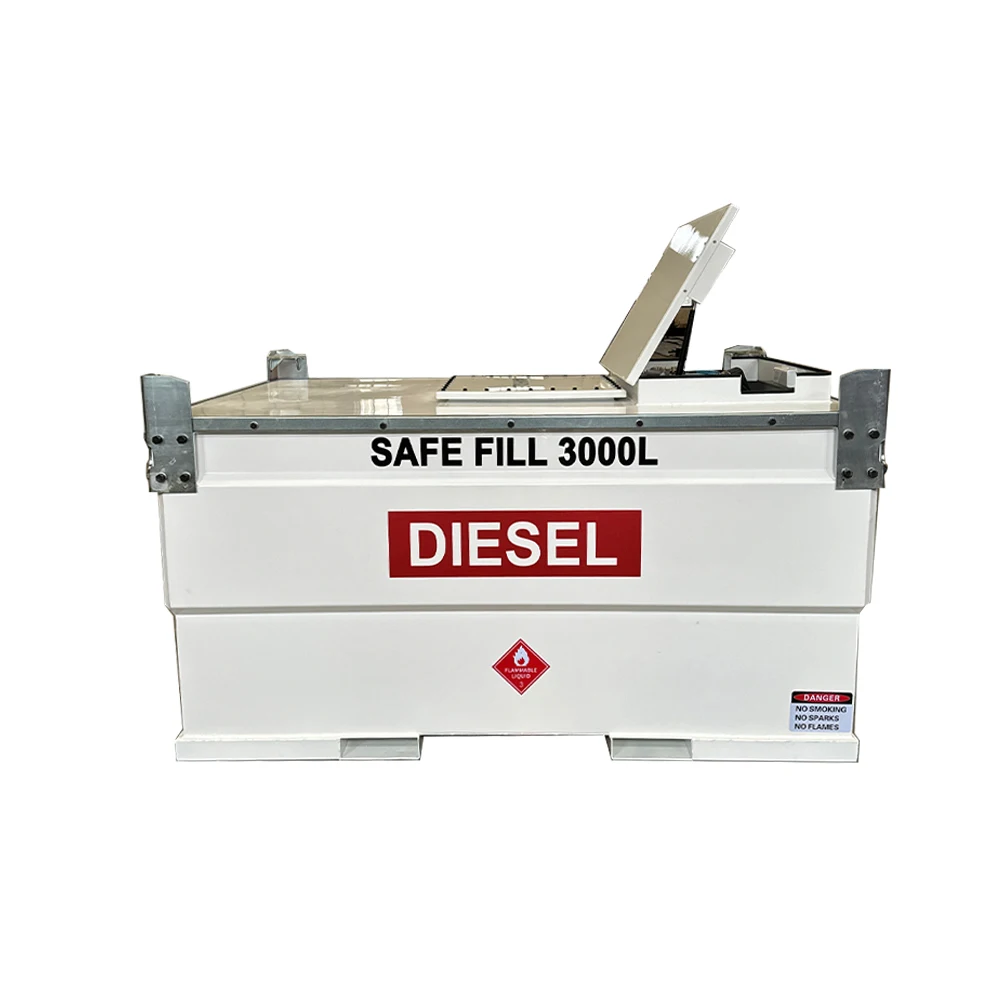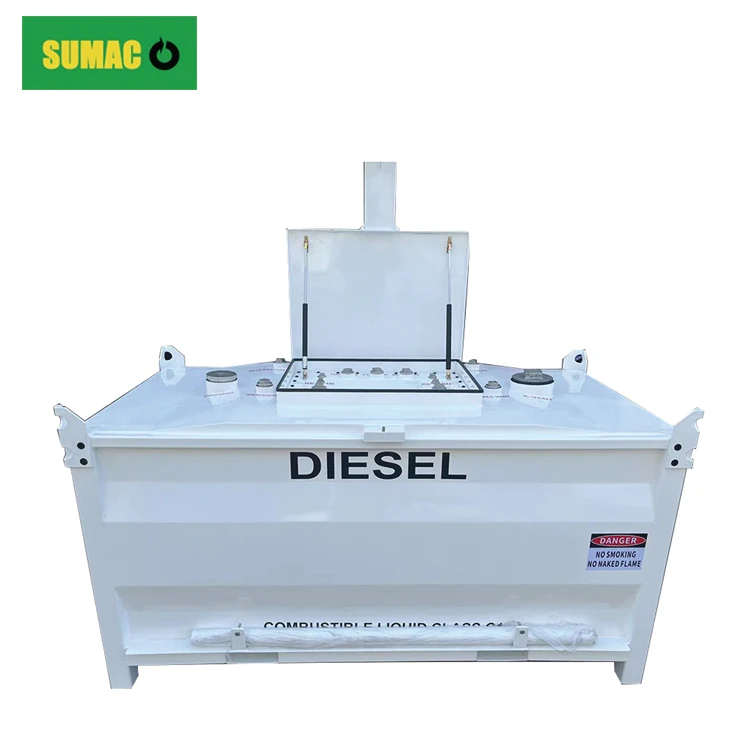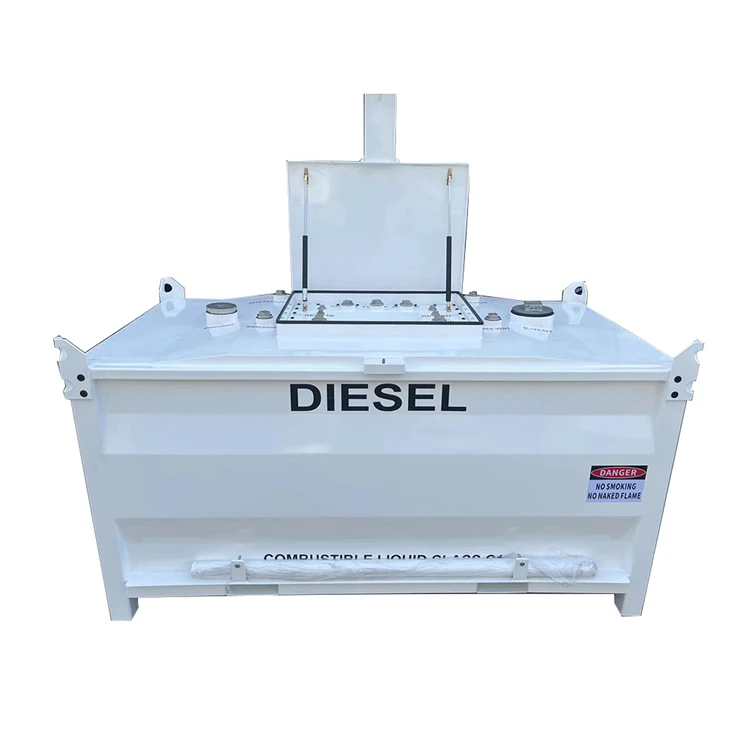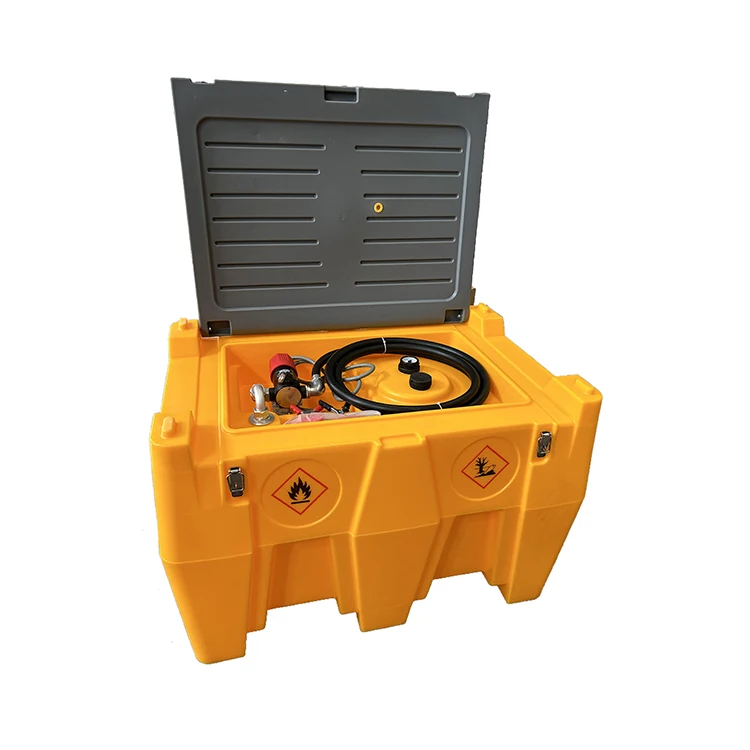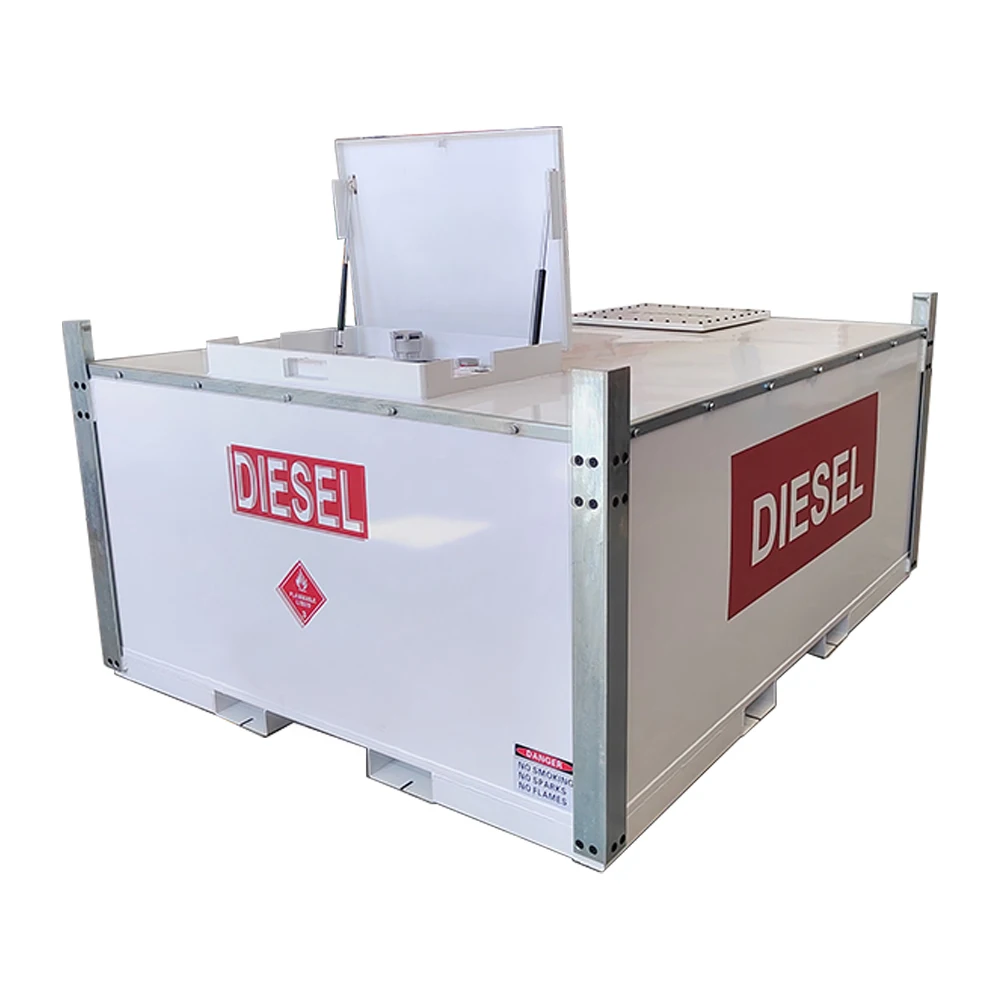Portable diesel fuelcube tank sale for New Zealand
Checking the tightness of the mobile fuel tank is crucial to effectively prevent fuel leakage and avoid safety hazards. Here are some common inspection methods:
1. Appearance inspection
First, conduct a comprehensive appearance inspection of the fuel tank to check whether there are obvious oil stains, oil marks or signs of fuel leakage on the surface of the fuel tank. Pay special attention to welds, joints, around valves, and corners of the fuel tank, which are prone to cracks or poor sealing. If fuel leakage is found, it means that there is a problem with the sealing and further inspection and repair are required.
2. Pressure test
This is a more accurate inspection method. You can use special pressure testing equipment to seal the fuel tank and fill it with a certain pressure of gas (usually air). The general pressure value depends on the specifications and requirements of the fuel tank, usually between 0.1-0.3MPa. After filling the gas, observe the reading of the pressure gauge. Within the specified time (such as 10-15 minutes), if the pressure drops by more than a certain range (such as 0.05MPa), it means that there is a leak in the fuel tank and the leak point needs to be found and repaired. In order to locate the leak more accurately, soapy water can be applied to the part where the leak may occur. If bubbles are generated, the part can be determined to be the leak point.
3. Fuel level observation method
Add a certain amount of fuel to the fuel tank and observe the changes in the fuel level over a period of time. If the level drops significantly without using fuel, there may be a leak in the fuel tank. However, this method is relatively inaccurate because the drop in the level may be affected by other factors, such as the volatilization of fuel, but it can be used as a preliminary inspection method.
4. Vacuum test
Test the fuel tank using a vacuum test device. Pump the inside of the fuel tank into a vacuum state, and then observe the maintenance of the vacuum degree. If the vacuum degree cannot remain stable and there is a significant rebound phenomenon, it means that air has entered the fuel tank, that is, there is a sealing problem. This method is more effective for detecting tiny leaks.
https://www.sumachine.com/

Recommended Products
Hot News
-
Double wall portable diesel gasoline cube tank with pump sale for Mauritius
2024-11-11
-
Double Walled Portable Fuel TransferCube Tank Ship To Spain
2024-11-07
-
Shipping of portable aviation fuel tank with pump
2024-10-12
-
Carbon steel diesel fuel cube tank ship to USA
2024-11-14
-
Carbon steel cube tank with pump
2024-11-13
-
Fuel Transfer Tank Cube Stationary Double Walled Diesel Storage Tank Sale For Spain
2024-11-06
-
251 US Gallon 552 Gallon Fuel Cube Transfer Tank Sale For USA
2024-11-05
-
251-2000 Gallon Fuel Cube Transfer Tank Sale For Grenada
2024-11-01
-
552 Gallon portable fuel dispenser with tank sale for USA
2024-10-30
-
Mobile fuel tank with pump sale for Spain
2024-10-22
 EN
EN
 AR
AR
 BG
BG
 HR
HR
 CS
CS
 DA
DA
 NL
NL
 FI
FI
 FR
FR
 DE
DE
 EL
EL
 IT
IT
 JA
JA
 KO
KO
 NO
NO
 PL
PL
 PT
PT
 RO
RO
 RU
RU
 ES
ES
 SV
SV
 TL
TL
 ID
ID
 LT
LT
 SR
SR
 SK
SK
 SL
SL
 UK
UK
 VI
VI
 HU
HU
 TH
TH
 TR
TR
 MS
MS
 GA
GA
 IS
IS
 KA
KA
 HT
HT
 KK
KK
 UZ
UZ


